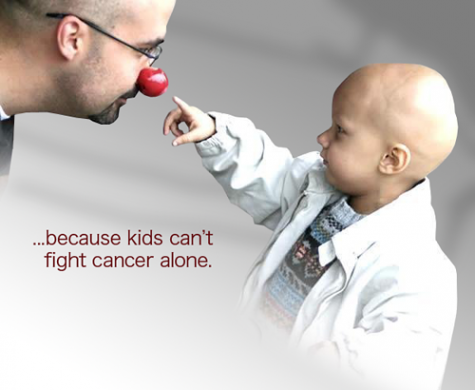Number of childhood cancer survivors increasing, most have morbidities
The prevalence of childhood cancer survivors is estimated to have increased, and the majority of those who have survived five or more years beyond diagnosis may have at least one chronic health condition.
Journal in Which the Study was Published: Cancer Epidemiology, Biomarkers & Prevention, a journal of the American Association for Cancer Research
Author: Siobhan M. Phillips, PhD, MPH, assistant professor of preventive medicine at Northwestern University Feinberg School of Medicine in Chicago
Background: The goal of the study was to update prevalence estimates of childhood cancer survivors in the United States and estimate the burden of morbidity among those who survived five years or longer since diagnosis, according ot Phillips.
How the Study Was Conducted: The researchers used cancer incidence and survival data recorded between 1975 and 2011 from nine U.S. Surveillance, Epidemiology, and End Results (SEER) registries, and data from the Childhood Cancer Survivor Study (CCSS) cohort that had information on a range of potential adverse and late effects of cancer treatment from more than 14,000 long-term survivors of childhood cancers at 26 cancer centers across the United States and Canada. They first obtained estimates of the probability of each measure of morbidity from CCSS and then multiplied these estimates by the relevant number of survivors in the United States estimated from the SEER data.
Results: Phillips and colleagues estimated the number of childhood cancer survivors in the United States to be 388,501, which is an increase of 59,849 from the previous estimate made in 2005 by a team from the National Cancer Institute (NCI). Of these survivors, about 84 percent had survived five or more years post-diagnosis.
 About 70 percent of the survivors of childhood cancers were estimated to have a mild or moderate chronic condition, and about 32 percent were estimated to have a severe, disabling, or life-threatening chronic condition. An estimated 35 percent of the survivors, ages 20 to 49, had neurocognitive dysfunction; about 13 to 17 percent of those in this age group had self-reported functional impairment, activity limitations, impaired mental health, pain, or anxiety/fear.
About 70 percent of the survivors of childhood cancers were estimated to have a mild or moderate chronic condition, and about 32 percent were estimated to have a severe, disabling, or life-threatening chronic condition. An estimated 35 percent of the survivors, ages 20 to 49, had neurocognitive dysfunction; about 13 to 17 percent of those in this age group had self-reported functional impairment, activity limitations, impaired mental health, pain, or anxiety/fear.
Author Comment: In an interview, Phillips said, “Our study findings highlight that a singular focus on curing cancer yields an incomplete picture of childhood cancer survivorship. The burden of chronic conditions in this population is profound, both in occurrence and severity. Efforts to understand how to effectively decrease morbidity burden and incorporate effective care coordination and rehabilitation models to optimize longevity and well-being in this population should be a priority. We know that many of these morbidities are at least somewhat modifiable in the general population. However, we don’t know if typical population guidelines for preventive behaviors apply to this group. We need to develop a better understanding of the multilevel factors including, but not limited to, physical activity, diet, and treatment characteristics, which influence childhood cancer survivors’ susceptibility to these morbidities in order to effectively prevent and delay their onset.”
###
To interview Siobhan Phillips, please contact Marla Paul at marla-paul@northwestern.edu or 312-503-8928. For other inquiries, contact Lauren Riley at lauren.riley@aacr.org or 215-446-7155.
Funding & Disclosures: This study was a collaboration among Northwestern University, the NCI, and St. Jude Children’s Research Hospital. This study was funded by the National Institutes of Health. Phillips declares no conflicts of interest.
About the American Association for Cancer Research
Founded in 1907, the American Association for Cancer Research (AACR) is the world’s oldest and largest professional organization dedicated to advancing cancer research and its mission to prevent and cure cancer. AACR membership includes more than 35,000 laboratory, translational, and clinical researchers; population scientists; other health care professionals; and cancer advocates residing in 101 countries. The AACR marshals the full spectrum of expertise of the cancer community to accelerate progress in the prevention, biology, diagnosis, and treatment of cancer by annually convening more than 25 conferences and educational workshops, the largest of which is the AACR Annual Meeting with over 18,500 attendees. In addition, the AACR publishes eight prestigious, peer-reviewed scientific journals and a magazine for cancer survivors, patients, and their caregivers. The AACR funds meritorious research directly as well as in cooperation with numerous cancer organizations. As the Scientific Partner of Stand Up To Cancer, the AACR provides expert peer review, grants administration, and scientific oversight of team science and individual investigator grants in cancer research that have the potential for near-term patient benefit. The AACR actively communicates with legislators and other policymakers about the value of cancer research and related biomedical science in saving lives from cancer.
###
Lauren Riley
lauren.riley@aacr.org
215-446-7155
American Association for Cancer Research
Journal
Cancer Epidemiology, Biomarkers & Prevention